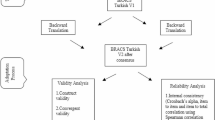Abstract
Rapidly evolving global economic status has changed professional behavior. Of late, there is a drastic increase in professional voice users and thereby increase in the patients with voice disorders. Clinically, the changes in the voice can only be perceived but cannot be quantified and documented. It is therefore necessary to have a gadget/tool which is simple and with which we can document and quantify the voice change objectively. This is a prospective case control study with 50 normal control subjects (25 male and 25 female subjects) who had no voice complaints and 50 patients(cases) who presented with complaints of change in voice due to various voice pathologies, the voices were recorded from the control group and also from the cases group both pre and posttreatment and were analyzed. The disease specific frequency in various pathologies of voice pre and post treatment were documented. The degree of change in voice frequency pre and post treatment were compared with each other and with the average frequency obtained from the voices in the control group. Office based acoustic analysis can definitely be used as a simple tool for documenting voice changes on outpatient basis and it provides a dependable documented evidence with which we can even compare the results following treatment.
Similar content being viewed by others
Abbreviations
- F0/f0:
-
Fundamental frequency of the voice
- Cf0:
-
Frequency of voice in controls
- Hz:
-
Hertz
References
Mathieson L (2001) Greene and Mothieson’s the voice and its disorders, 6th edn. Whurr publication Ltd, London
Thomas C, Mona A (2005) The Hoarseness patient ENT Secrets 3:179
Bastian RW. Benign vocal fold mucosal disorders. In: Cummings otolaryngology head and neck surgery. 4th ed. Vol. 3. Philadelphia (PA): Mosby; 2005. p. 2150.
Dehqan A, Yadegari F, Scherer RC, Dabirmoghadam P (2017) Correlation of VHI-30 to acoustic measurements across three common voice disorders. J Voice 31(1):34–40
Torabinenezhad F, Izadi F, Pourshahbaz A, Bijankhan M, Eslami M, Rohani M, Ebrahimipor M (2018) Acoustic parameters in Persian-speaking patients with dysphonia. Function and Disability J. 1(3):8–17
Petrovic-Lazic M, Kosanovic R, Babac S (2009) Acoustic analysis findings in patients with vocal fold polyp. Acta Med Sal 38(2):63–66
doAmaral Catani GS, Hamerschmidt R, Moreira AT, Timi JR, Wiemes GR, Ido J, Macedo E. (2016) Subjective and objective analyses of voice improvement after phonosurgery in professional voice users. Med Probl Perform Art. 31(1):18–24
Chhetri SS, Gautam R (2015) Acoustic analysis before and after voice therapy for laryngeal pathology. Kathmandu Univ Med J 52(4):323–327
Virmani N, Sharma A, Dabholkar J (2016) Outcome analysis in patients with benign vocal fold lesions. Int J PhonosurgLaryngol 6(1):8–13
Wertzner H, Schreiber S, Amaro L (2005) Analysis of fundamental frequency, jitter, shimmer and vocal intensity in children with phonological disorders. Rev Bras Otorrinolaringol 71:582–588
Teixeira JP, Fernandes PO (2014) Jitter, shimmer and HNR classification within gender, tones and vowels in healthy voices. Procedia Technol 16:1228–1237
Thomas.G, Mathews SS, Chrysolyte SB, Rupa V. (2007) Outcome analysis of benign vocal cord lesions by videostroboscopy, acoustic analysis and voice handicap index. Indian J Otolaryngol Head Neck Surg. 59(4):336–340
Sataloff RT (1991) Professional voice. Raven Press, The science and art of clinical care. New York
Giovani A, Revis J, Triglia JM (1999) Objective aerodynamic and acoustic measurement if voice improvement after phonosurgery. Laryngoscope 109:656–660
Van Lierde K, Moerman M, Vermeersch H, Van Cauwenberge P. 1996 An introduction to computerized speech lab. Acta Oto-Rhino-LaryngologicaBelg 50: 309–15.
Laver J, Hiller S, Beck JM (1992) Acoustic waveform perturbations and voice disorders. J Voice 6:115–126
Horii Y (1985) jitter and shimmer in sustained observed in sustained phonation. Folia Phoniatr 37:81–86
Halberstam B (2004) Acoustic and perceptual parameters relating to connected speech and more reliable measures of hoarseness than parameters relating to sustained vowels. J Otto Rhino laryngol 66:70–3
Sorenson D, Horii Y (1983) Frequency and amplitude perturbation in the voice of female speakers. J Commun Dis 16:57–61
Funding
No funding was utilised for the study.
Author information
Authors and Affiliations
Corresponding author
Ethics declarations
Conflict of interest
No potential conflict of interests.
Additional information
Publisher's Note
Springer Nature remains neutral with regard to jurisdictional claims in published maps and institutional affiliations.
Rights and permissions
About this article
Cite this article
Gera, S., Murthy Pusuluri, S.N. & Tripuraneni, S.C. Office Based Voice Evaluation in Assessing Outcome of Treatment in Laryngeal Disorders. Indian J Otolaryngol Head Neck Surg 74 (Suppl 3), 5111–5116 (2022). https://doi.org/10.1007/s12070-021-02887-0
Received:
Accepted:
Published:
Issue Date:
DOI: https://doi.org/10.1007/s12070-021-02887-0




